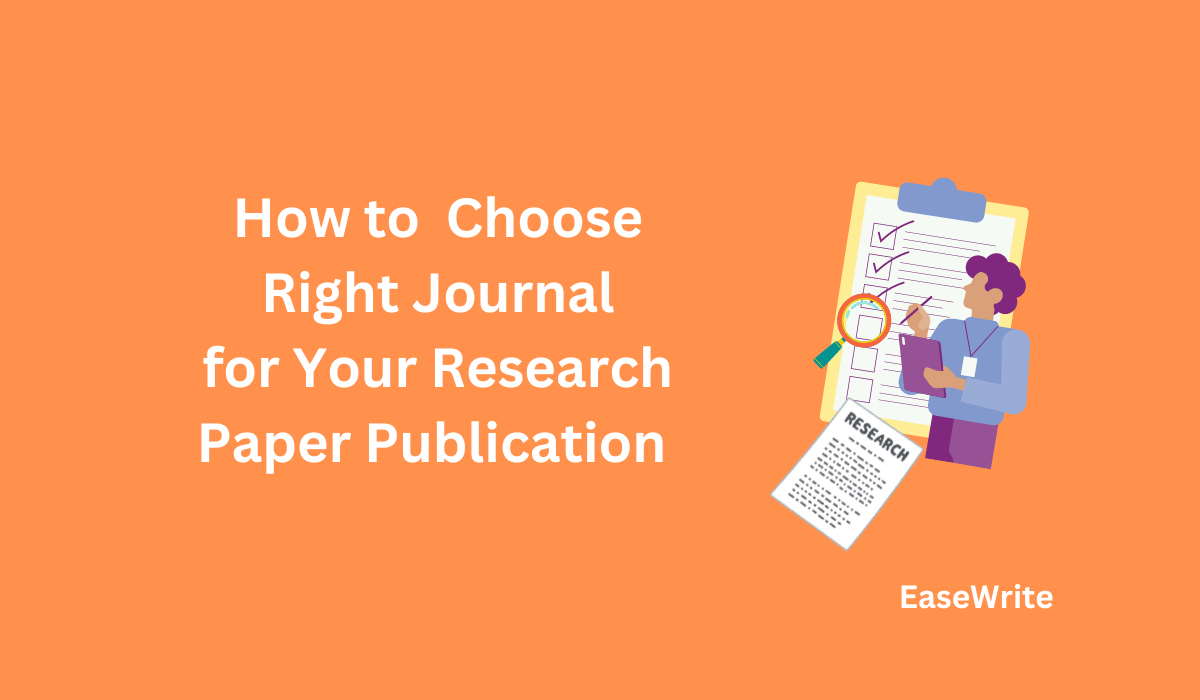Table of Contents
Understand Your Research
Practical Considerations
Tips for Making the Final Decision
Conclusion
Selecting the right journal for your research paper publication is crucial for ensuring that your work reaches the right audience and receives the recognition it deserves. This process can be challenging, especially given the vast number of academic journals available across various fields. Here’s a comprehensive guide on how to choose the right journal for your research paper publication.
Understand Your Research
Identify Your Research Field
The first step in choosing the right journal is to clearly define your research field. Is your paper focused on biology, engineering, social sciences, or perhaps interdisciplinary studies? Knowing your specific field helps narrow down potential journals.
Assess the Scope and Focus of Your Research
Understanding the scope and focus of your research helps in identifying journals that publish similar work. Determine whether your research is theoretical, experimental, applied, or a review. This categorization will guide you toward journals that align with your research’s nature and depth.
Research Potential Journals
Use Journal Databases and Search Engines
Utilize academic databases and search engines like PubMed, Google Scholar, Web of Science, and Scopus to find journals that publish papers similar to yours. These platforms allow you to search by keywords, author names, or titles, providing a list of journals where similar research has been published.
Consider Journal Reputation and Impact Factor
Journal reputation and impact factor are essential metrics in the academic community. Impact factor reflects the average number of citations to recent articles published in the journal. High-impact journals are often more prestigious but also more competitive. Assess whether aiming for a high-impact journal aligns with your career goals and the quality of your research.
Review the Journal’s Aims and Scope
Visit the journal’s website and read through its aims and scope. Ensure that your research fits within the topics covered by the journal. Journals clearly outline the types of papers they publish, including the research areas, methodologies, and specific themes of interest.
Evaluate Journal Quality and Accessibility
Peer-Review Process
A rigorous peer-review process is a hallmark of reputable journals. It ensures that the published research is of high quality and has been scrutinized by experts in the field. Check the journal’s peer-review process details to understand how your paper will be evaluated.
Open Access vs. Subscription-Based Journals
Decide whether you prefer to publish in an open-access journal or a subscription-based journal. Open-access journals make articles freely available to the public, which can increase the visibility and impact of your work. However, they often charge publication fees. Subscription-based journals limit access to subscribers but may have no or lower publication fees.
Publisher Reputation
Consider the reputation of the journal’s publisher. Established publishers often have stringent quality control measures and are recognized in the academic community. Be cautious of predatory publishers that charge high fees without providing legitimate peer review or editorial services.
Match Your Paper to the Journal
Review Recently Published Papers
Reviewing recently published papers in potential journals gives you a sense of the type of research they prioritize. Look at the methodology, topics, and presentation style to determine if your paper aligns with their published works.
Consider the Journal’s Audience
Understand the journal’s target audience. Is it aimed at specialists, practitioners, or a general academic audience? Choosing a journal that reaches your intended audience ensures that your research has the desired impact and relevance.
Submission Guidelines and Acceptance Rates
Examine the journal’s submission guidelines carefully. Each journal has specific formatting, length, and style requirements. Adhering to these guidelines increases the likelihood of your paper being considered. Additionally, check the journal’s acceptance rates to gauge your chances of publication.
Practical Considerations
Time to Publication
Consider the time from submission to publication. Some journals have a faster review process, while others may take several months. If timely publication is critical for your career or research dissemination, factor in the publication timeline.
Fees and Charges
Evaluate any fees associated with publication. Open-access journals often require authors to pay article processing charges (APCs). Some subscription-based journals may also charge for color figures, supplementary materials, or page fees. Ensure that you have the necessary funding or institutional support to cover these costs.
Indexing and Abstracting Services
Check whether the journal is indexed in major databases like PubMed, Web of Science, or Scopus. Journals indexed in these databases tend to have higher visibility and credibility. Being indexed also ensures that your research is accessible to a broader academic audience.
Tips for Making the Final Decision
Seek Advice from Colleagues and Mentors
Consult with colleagues, mentors, and advisors who have experience in your field. They can provide valuable insights and recommendations based on their knowledge and past experiences with different journals.
Review Journal Metrics
Beyond impact factor, consider other metrics like the h-index, immediacy index, and citation half-life. These metrics provide additional perspectives on the journal’s influence and how quickly articles are cited.
Submit to Multiple Journals
Prepare a list of potential journals ranked by preference. If your paper is rejected by your top choice, you can quickly submit it to the next journal on your list. This approach saves time and increases your chances of getting published.
Check for Special Issues
Some journals publish special issues on specific themes. If your research aligns with an upcoming special issue, it might be easier to get accepted. Special issues often attract focused readership and can highlight your work within a niche area.
Conclusion
Choosing the right journal for your research paper publication involves a strategic approach that balances your research goals, the journal’s scope, and practical considerations. By understanding your research, researching potential journals, evaluating quality and accessibility, and considering practical aspects, you can make an informed decision that maximizes the impact and reach of your work. Remember, the right journal not only provides a platform for your research but also enhances your academic reputation and career prospects.
